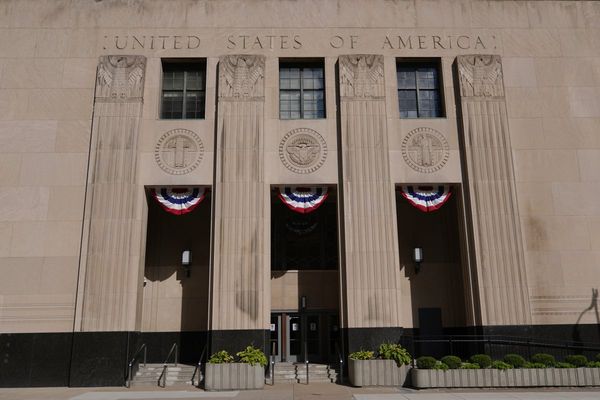A century of style ... the Eames Lounge Chair. Photograph: Nick Merrick/Grand Rapids Art Museum/AP
The iconic designer Charles Eames would have been 100 this year. To mark the centenary the Eames Foundation has been holding events every month, from lectures to a rather inspired version of musical (Eames) chairs.
So when I was in California recently I took a look around the place Charles and his wife and fellow designer, Ray, called home, The house is on a glorious site, perched up high in Pacific Palisades, a few miles from Los Angeles. It is a simple design, a red facing wall appearing out of the treescape like a work of abstract art.
There I spoke to Bern Styburski, the Eames Foundation's executive director, who welcomes visitors to the grounds (the house itself is not open, but extensive windows allow a fantastic peak at an interior untouched since Ray's death). Sixty years ago this house was modern not just in design but conception, a radical new architectural project. The background story reveals a fascinating prescience which links directly to contemporary quests for sustainable building.
The house came out of a challenge launched in the cutting-edge media of the time by one of its leading figures, the publisher John Entenza, an aficionado of great homes. Entenza announced his innovative Case Study Project in his magazine, Arts and Architecture. Architects and designers were invited to send in ideas for a series of homes inspired by the second world war. This was not just about techniques, and materials, but getting to the core of what the war had meant in the context of human experience. The magazine was the client, and proposals could be based on real or hypothetical scenarios.
For their Study House #8 the Eames's visualised their clients as themselves - a married couple working in design and graphic arts, who "wanted a home that would make no demands for itself, but would, instead serve as a background for 'life in work' with nature as a 'shock absorber'."
The initial plan was a collaboration between Charles Eames and Eero Saarinen, using materials obtained by catalogue. A steel shortage led to a change of plan - Charles and Ray loved their site and changed the design to accommodate. The Eames House, as it became known, was Ray and Charles' much loved home from 1949 until their deaths.
Charles and Ray were visionaries. A fascinating extension of their interest in sustainability and bio-diversity is the site Powers of Ten which this week (October 17) streams a new film by the Eames Foundation director, Eames Demetrios. He poses a provocative argument - "scale is the new geography and not understanding scale in this day and age is a form of illiteracy".
But back to the Case Study Project ... the use of a magazine to encourage ideas and comments strikes me as an early blueprint for a blog. If the programme was launched today, the challenge would go out on the web - how different would that be? A speedier process, or one slowed down by the many possibilities?
Already the virtual world is evolving into a test-bed for new architectures. Is this the way forward, or are we watching a new generation of architects taking up Eames's considerations, and testing architectural limits in a place where space and scale are, theoretically, boundless, but in real life would be unsustainable?
In fact, online collaboration seems a brilliant extension of Entenza's original concept - one not limited by the constraints of the page, but exploring new spatial freedoms in cyberspace. Architects networking on such a scale seems to fit with what Charles Eames once said, long before the internet: "Eventually, everything connects".







